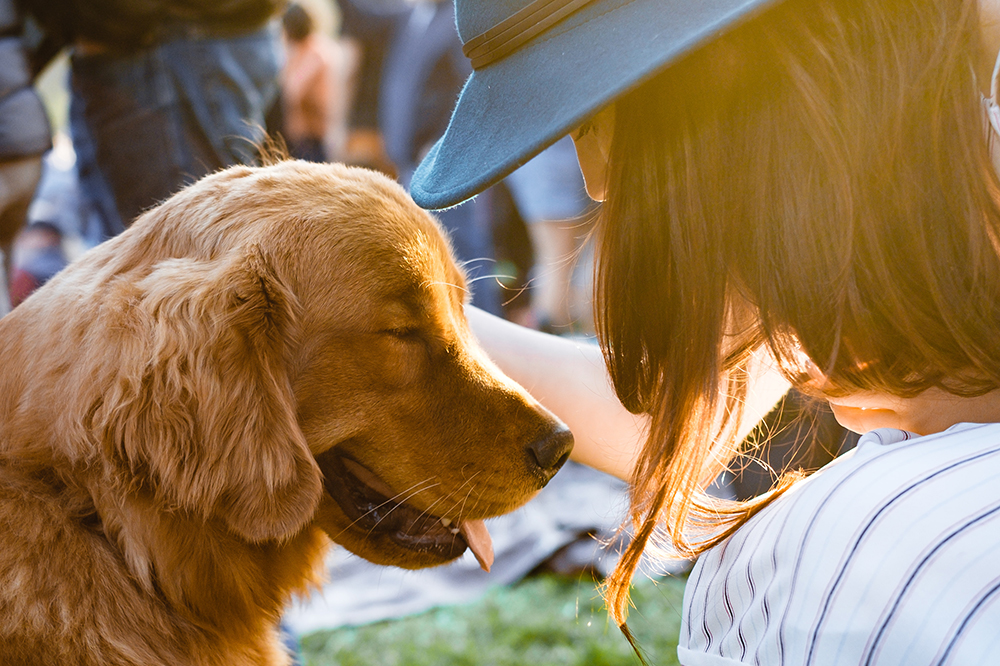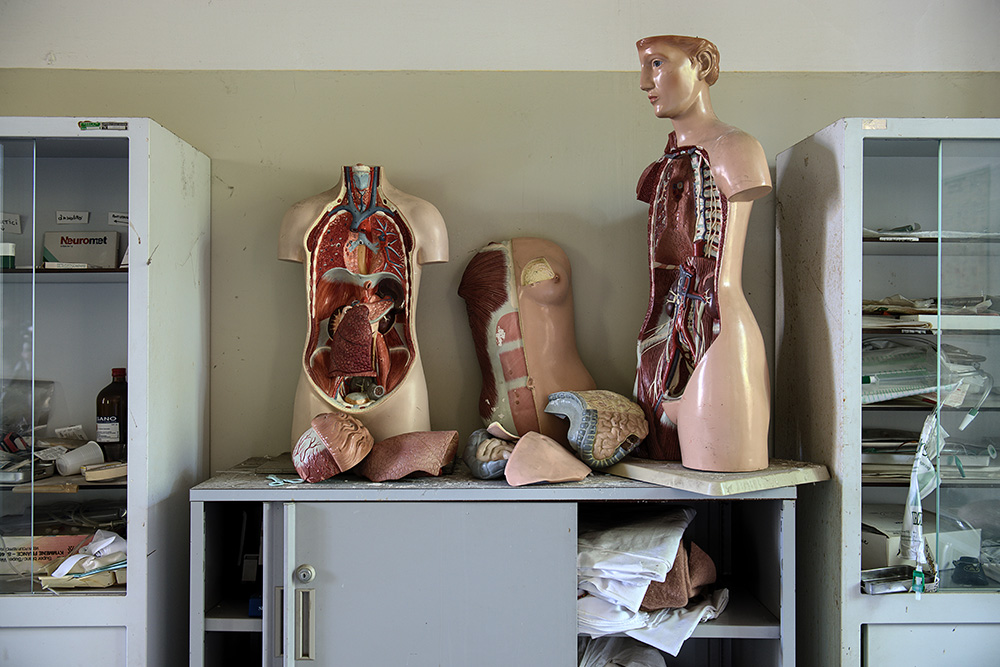The field of animal-machine interaction is gaining new research topics with social robots. Meiying Qin from Yale University and her co-authors have brought together a Nao and a dog. From the abstract of their paper: “In two experiments, we investigate whether dogs respond to a social robot after the robot called their names, and whether dogs follow the ‘sit’ commands given by the robot. We conducted a between-subjects study (n = 34) to compare dogs’ reactions to a social robot with a loudspeaker. Results indicate that dogs gazed at the robot more often after the robot called their names than after the loudspeaker called their names. Dogs followed the ‘sit’ commands more often given by the robot than given by the loudspeaker. The contribution of this study is that it is the first study to provide preliminary evidence that 1) dogs showed positive behaviors to social robots and that 2) social robots could influence dog’s behaviors. This study enhance the understanding of the nature of the social interactions between humans and social robots from the evolutionary approach. Possible explanations for the observed behavior might point toward dogs perceiving robots as agents, the embodiment of the robot creating pressure for socialized responses, or the multimodal (i.e., verbal and visual) cues provided by the robot being more attractive than our control condition.” (Abstract) You can read the full paper via dl.acm.org/doi/abs/10.1145/3371382.3380734.
Another Animal-friendly Machine
Between June 2019 and January 2020 the project HAPPY HEDGEHOG (HHH) was implemented at the School of Business FHNW. Initiator and client was Oliver Bendel. In the context of machine ethics, the students Emanuel Graf, Kevin Bollier, Michel Beugger and Vay Lien Chang developed the prototype of a lawnmower robot that stops working as soon as it discovers a hedgehog. HHH has a thermal imaging camera. If it encounters a warm object, it further examines it using image recognition. At night a lamp mounted on top helps. After training with hundreds of photos, HHH can identify a hedgehog quite accurately. Firstly, another moral machine has been created in the laboratory, and secondly, the team provides a possible solution to a problem that frequently occurs in practice: commercial lawnmower robots often kill baby hedgehogs in the dark. HAPPY HEDGEHOG could help save them. The video on youtu.be/ijIQ8lBygME shows it without casing; a photo with casing can be found here. The robot is in the tradition of LADYBIRD, another animal-friendly machine.
Virtual Reality for Cows?
Various media claimed in November 2019 that there would be very special experiments with cows in Russia. There are pictures circulating showing an animal wearing a virtual reality (VR) headset. This one could reduce anxiety and increase milk yield if it would show a pleasant environment – that’s at least the media’s assumption. But, according to The Verge, “it’s not at all clear whether this is a genuine trial or an elaborate marketing stunt” (The Verge, 26 November 2019). At the moment, there is hardly any evidence as to whether VR would work for cows. There is no doubt that it makes sense for humans, at least in the context of marketing. They could wear VR glasses to see a landscape with cows. They would then believe that most cows have a good life. But this good life does not exist. Cows suffer from what you do to them – some more, some less. “At the end of the day, what we can say is that someone took the time to make at least one mock-up virtual reality headset for a cow and took these pictures. We don’t need to milk the story any more than that.” (The Verge, 26 November 2019)
The Reversed Cyborg
Chimeras in the biological and medical sense are organisms that consist of cells or tissues of different individuals and yet form closed and viable (not necessarily reproductive) organisms. They can be located within a species or between species and can be both plants and animals. There are natural (blood chimeras in mammals) and artificial mixed organisms (grafting in plants, animal-human embryos). Cyborgs are not chimeras in this sense. Nevertheless, research in this field might also be relevant for them, in particular for inverted or reversed cyborgs, for example robots in which an animal or human brain or organ is implanted. Animal-human chimeras for the production of human organs are regarded as unproblematic by many ethicists. According to a comment by Oliver Bendel, this is astonishing, since findings from animal ethics and veterinary medicine and in particular suffering and death of non-human living beings are ignored.
The Fight against Plastic in the Seas
The pollution of water by plastic is a topic that has been in the media for a few years now. In 2015, the School of Engineering FHNW and the School of Business FHNW investigated whether a robotic fish – like Oliver Bendel’s CLEANINGFISH (2014) – could be a solution. In 2018, the information and machine ethicist commissioned another work to investigate several existing or planned projects dealing with marine pollution. Rolf Stucki’s final thesis in the EUT study program was based on “a literature research on the current state of the plastics problem worldwide and its effects, but also on the properties and advantages of plastics” (Management Summary, own translation). “In addition, interviews were conducted with representatives of the projects. In order to assess the internal company factors (strengths, weaknesses) and external environmental factors (opportunities, risks), SWOT analyses were prepared on the basis of the answers and the research” (Management Summary) According to Stucki, the results show that most projects are financially dependent on sponsors and donors. Two of them are in the concept phase; they should prove their technical and financial feasibility in the medium term. With regard to social commitment, it can be said that all six projects are very active. A poster shows a comparison (the photos were alienated for publication in this blog). WasteShark stands out among these projects as a robot. He is, so to speak, the CLEANINGFISH who has become reality.
How to Treat Animals
Parallel to his work in machine ethics, Oliver Bendel is trying to establish animal-machine interaction (AMI) as a discipline. He was very impressed by Clara Mancini’s paper “Animal-Computer Interaction (ACI): A Manifesto” on animal-computer interaction. In his AMI research, he mainly investigates robots, gadgets, and devices and their behavior towards animals. There are not only moral questions, but also questions concerning the design of outer appearance and the ability to speak. The general background for his considerations is that more and more machines and animals meet in closed, half-open and open worlds. He believes that semi-autonomous and autonomous systems should have rules so that they treat animals well. They should not disturb, frighten, injure or kill them. Examples are toy robots, domestic robots, service robots in shopping malls and agricultural robots. Jackie Snow, who writes for New York Times, National Geographic, and Wall Street Journal, has talked to several experts about the topic. In an article for Fast Company, she quotes the ethicists Oliver Bendel and Peter Singer. Clara Mancini is also expressing her point of view. The article with the title “AI’s next ethical challenge: how to treat animals” can be downloaded here.





